























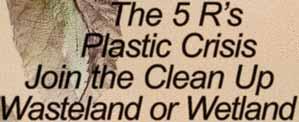



































TAKE5 take5.ca 3


























































4 take5.ca APRIL2024 t taakkee55.ca ca

Letters
HEARTH Supportive Housing not supported
Premier Eby promising more help for seniors is not what we are experiencing in Seabreeze Mobile Home Park. We are finding just the opposite for our community of seniors. We have over 200 seniors living in our mobile home park. We are here because it is affordable and within walking distance of all the amenities.
Single seniors, many with mobility issues, still walk to the amenities across the highway, many for their health but in some cases because they cannot afford a car or fuel for the car.
Many are afraid of the unknown and want to be able to ask questions. BC Housing has made it very clear that they WILL NOT meet with our group nor with the Chase River Community Association group. They send us to their website. Many seniors do not have internet or access to computers.
Some neighbours are taking their food and prescription money to purchase outdoor security cameras.
Chevron Bulk Plant is right next door to the future site of HEARTH Supportive Housing. Other bulk fuel plants and business on that block are also concerned. The management there is afraid of theft and fi re. History tells us that both have been a problem at multiple BC Housing HEARTH home sites. I personally witnessed one at the 250 Terminal Avenue site. Does an individual person or business have to incur the expense of extra security?
We are informed by the RCMP that the private security has been cancelled at 250 Terminal Ave and Labieux locations and that there will be no security at 1300 Island Hwy South.
We are told it is a done deal and that there is no chance for









TAKE5 take5.ca 5
any change to location.
We are the ones who have been paying taxes for over half a century, and this is what we get? Do we deserve this?
— Kathy Reilly
Public letter to Doug White, Special Counsel to the premier on Reconciliation
I am writing to you as a concerned member of Stz’uminus First Nation about Reconciliation and the way it is being implemented for my community.
When I fi rst learned that our elected officials had committed to following the ideals set out in UNDRIP, I was optimistic that fi nally we are on the right path to economic and social equality in this great country of Canada.
Yet, I had a small feeling of doubt, which has grown. Would “Reconciliation” be another “program” that white people could use to their own advantage?
I grew up off-reserve. I was a commercial fisherman and then a businessman. I have struggled against all kinds of institutional racism, as has my family and every Native person. I have been turned down for business loans, ignored when

tendering for contracts and sidelined for jobs because of my heritage.
But the most painful part for me is to see non-Native people economically benefiting from programs and funding which was intended to lift up our people, and being sidelined and ignored by organizations which are supposed to work for us.
Elected officials — federal, provincial, municipal and even our own — do nothing, and don’t listen to ordinary people. I am hoping that you do not ignore my letter and words, like so many others.
Like most bands, Stz’uminus has an Economic Development arm, which is supposed to work for the benefit of our people. It is staffed mainly by non-Native people. It is a “for profit” organization and should split the profit 80/20 with SFN. It is supposed to be over-seen by our Chief and Band Council, but in recent years this oversight has been non-existent.
The Coast Salish Development Corp (CSDC) has, without any community consultation, sold and purchased land, invested in partnerships with non-Native companies and has been negotiating how “reconciliation” plans should be progressed in our community. We


have no idea exactly what has been happening because they do not issue newsletters and nothing has been posted on their website since 2016.
CSDC run developments like Oyster Bay Village employ very few Native people, and it is unclear how profit from all these ventures is being used for the furtherment of our people.
On one side of the highway, there are beautiful buildings, infrastructure and roads, on the other, poverty, squalor, potholed roads and lack of decent water.
Most recently, the Province transferred a water lease supposedly to SFN. But it didn’t go to us. It went to CSDC. Most of our community don’t know we have the water lease and the new marina Oyster Bay Marina.
Instead of planning ways that our own community can use the marina, the CSDC has spent our money on legal fees to fight with a non-profit society which used to run the marina and cause division between SFN and Ladysmith community. I could understand this, if the marina was to provide jobs, mooring and any other benefits to SFN members, but instead the marina is now being operated by another non-Native company.





6 take5.ca APRIL2024
This is another example of a non-Native organization partnering with another non-Native organization to benefit themselves.
Stz’uminus members are capable of running a marina, and if there are not members with experience, we could have made a deal with the last operators of the marina to provide training. We should be celebrating the transfer of the water lease and inviting Ladysmith community to celebrate with us. Instead, we are the laughing stock of the boating community, as per a recent article in Western Mariner, which describes a 25 per cent increase in moorage prices, lack of facilities and broken down water and sewer lines. CSDC has proven the stereotype “Indians can’t run anything.” In fact, it’s the non-Native operators, but the public just think it’s us.
Funding has been provided by the Province to CSDC to clean up Ladysmith Harbour. A non-Native group is being paid for this. There was no opportunity — as there never is — for a Native organization to even bid for that contract. So far, the harbour is as dirty as ever, so where did the money go?
These are just a few examples.
Some of our community signed a petition to get the CSDC audited. There was a motion voted in Council to do this, but still no progress, still no consultation, still no community meetings.
Now, you might tell me that this is a problem best sorted by our Chief. And I would agree. But what happens when we don’t get answers from our Chief and Council? What happens when our petitions are ignored? Who do we go to then?
What is this to do with me? You might ask. The issue is that the community members have almost no voice. We don’t know the questions to ask, we don’t know how to force the CSDC to tell us information, and because of the disparity in power on the rez, many are afraid to ask. You know how that works. If a community member “causes trouble,” suddenly they don’t get help paying their hydro bill, or they don’t get food fish.
Ordinary Indians need to take back power, we need help to do this, we need to know how to best audit and keep our fi nancial affairs transparent.
The CSDC and the Chief and Council are supposed to work for us, not the



other way around.
I am asking you for help. Tell the Province that they must insist that ordinary community members are involved in every decision, not non-Native representatives. Make sure that local mayors and municipalities are not complicit and just use resources intended for our community to further their own pet projects. Help us get the skills to become board members and representatives in our own communities, so we know how to best serve our members.
Now, the Feds and the Province are patting themselves on the back because they have “done reconciliation.” But all they have done is set us up to fail. In a decade’s time, if nothing changes, many non-Native people will have made millions of dollars and our people will still be poor. And then white people will say, like they always do, “Look at the Indians, we gave them what they wanted and they still couldn’t make it work.”
This is the path we are going down unless we speak up and keep the rot out of Reconciliation.
-Robert Edmond Elliott, Stz’uminus First Nation Band Member letters to editor@take5.ca

TAKE5 take5.ca 7


Seniors rally for benefits
BY MARINA SACHT
A group of seniors gathered March 21 in downtown Ladysmith as part of a province-wide Tin Cup Senior Rights Matter rally. Seniors Tin Cup is raising awareness of seniors poverty and demanding the Canadian government raise pensions to at least the poverty level. They state that if a senior has only CPP, GIS and OAS to rely on, they are living well below the poverty line.
The Canadian poverty threshold is $25,252 a year. CPP, GIS and OAS are less than $18,000 to $20,000 year. Seniors 65 to 74 years receive $713.34 OAP per month; 75 years and over receive $784.67 per month.
If income is less than $21,624, a guaranteed income supplement of $1065.47 is available if you qualify. If the senior has extra income, is still working, receives CPP and goes over the $21,624 per year, the government can deduct any extra over $21,624, which is almost $4,000 below the poverty line. Therefore, many seniors have only $1773.34 per month to live on.
The protest was part of a provincewide simultaneous protest with seven cities participating, and Lady-smith was the only one on the Island.
The advocacy group started in Vancouver when Sharon Elliot teamed up with the Marpole Seniors Centre to draw attention to the fact that seniors' pensions were too low. When Carole Fawcett, who was campaigning for senior rights in Vernon independently found out about Elliot, they joined forces to create the Tin Cup movement.
“Everybody giving money to everything else and not remembering that we put it a lot into this,” says Joanne Burroughs, 74, who states she personally is doing fi ne economically, but she is supporting the Senior Tin Cup movement for others. “Like the 81-year-old woman who is still working or the woman who

lives in her van because she can’t afford an apartment.”
And senior women are hit particularly hard, with 28 per cent of senior women living in poverty.
“We don’t want to be treated by the government as doting old fools. We are not. And there are lots of us,” she says, pointing out that there are 1.6 million seniors in BC, and they vote.
Cars are slowing down and honking. One pulls over and asks for a brochure from the group assembled in front of the Island Hotel.
Katie Moore came from North Nanaimo to join the rally. “We’re 65 and it could be us,” she says. The future is never certain. This is not due to poor planning. Life throws curve balls: death of a spouse, single parenthood, accidents, divorce and health expenses can change your fi nances quickly.
Maureen Pietrzykowski says she is fortunate to have a roof over her head. “But I know lots of my peers that are struggling even to fi nd a place that they can afford to live. Everything’s so expensive. It’s a tragedy that people who built and spent their whole lives working are struggling.”
Cindy Satre thought it would be cheaper to live in a small town, but she says that isn’t the case. A lack of public transportation also affects seniors' bottom line.
“When I was working and healthy enough to work, minimum wage was bad enough. A lot of people, includ-
ing myself, couldn’t save for retirement because you were barely making ends meet anyway.” She and her son live together. “We are relying on and helping each other.”
Helen Kyle is at the rally “because there are people that can’t live with what we’re getting from the government.” She hopes the Seniors Tin Cup movement spreads across the country, like when a group of youth protested a candy price hike that became known as the Five Cent Candy War.
Dave Zazula holds his placard high so the motorists can see it. “We’re making people aware,” he says.
Provincial organizer Carole Fawcett said the demonstrations went well. “It was great to see that so many seniors are not prepared to remain silent any more.”
More rallies are planned for June.
Town Sets Plan in Motion to Reopen Machine Shop
The Town of Ladysmith is moving forward with improvements to the machine shop in the former Comox Logging & Rail Co. complex. The heritage building is expected to serve as the “heart” of the Arts & Heritage Hub.
The Town previously received $3,307,500 through the federal government’s Investing in Canada Infrastructure Program (ICIP) – Rural and Northern Communities for Hub projects, including the construction of a new artist studio.
The Arts & Heritage Hub Design
10 take5.ca APRIL2024
Seniors Tin Cup Rally in front of the Island Hotel, Ladysmith. Photo: Marina Sacht
Steering Committee, with guidance from Stz’uminus Elders, collaborated with an architectural fi rm for over a year to fi nalize a studio design, including floorspace as well as landscaping features.
Council made the decision not to award the construction tender after the proposed design to exceed the original budget by 67 per cent.
The Town has now received approval from federal and provincial funders for a change in scope to allow funds to go solely towards reactivating 3,900 square feet of public space within the machine shop. The Town’s ICIP grant application did not include these upgrades as the required work was ineligible under the program requirements.
“We are thankful to our funding partners for supporting the reallocation of grant funding to this important historical and cultural asset at our waterfront,” says Mayor Aaron Stone.
The completion of these upgrades to the machine shop will further facilitate use of the building by community groups, artists and other prospective lease holders, helping ensure the Arts & Heritage Hub area is a gathering place for residents and visitors.
The Town intends to complete the following upgrades: addition of a new public meeting space available for community rentals; a new multipurpose teaching space; two accessible washrooms, ground and upper floors; new windows across the entire front of the building helping further improve energy efficiency and lowering utility costs for tenants; two artists studios available for long-term rentals; entry ways and stairwells highlighted by an indoor display space for public art and cultural installations; landscaping and re-habilitation of the outdoor performance space to the south of the building; an accessible 200foot board-walk fronting the building; and all related works such as to meet the BC Building Code requirements.
The Town anticipates a reopening of the machine shop before spring 2026.
“I extend our gratitude to the Arts and Heritage Hub Steering Committee for their work, and in particular Stz’uminus Elders,” says Mayor Stone.
The Town is continuing to explore potential grant options for the construction of the artist studio.












TAKE5 take5.ca 11


Water to Earth Month Kicks off with Activities for All Ages
The Regional District of Nanaimo (RDN) is celebrating Water to Earth Month through in-person and virtual events and activities continuing until Earth Day on April 22. The themes are “Leveraging Water for Peace” and “Planet vs Plastics.”
“This year’s Water to Earth Month highlights the importance of water in creating an equitable, prosperous and stable future for us all as well as the necessity of reducing the production of plastics to promote better human and environmental health,” says Vanessa Craig, RDN chair. “We invite residents to participate in some, or all, of these activities where we can learn about water ecosystems as well as actions each of us can take to help protect our shared water resources and the environment.”
This year, over 16 events are planned during Water to Earth Month, including online contests where you can share water conservation and climate action photos and stories on the RDN’s social media channels for a chance to win some great prize packs.
The RDN is partnering with the City of Nanaimo, Nanaimo Area Land Trust, Vancouver Island University, Mount Arrowsmith Biosphere Region Institute, Mosaic Forest Management and the Brant Wildlife Festival to present these events. Other contributing organizations include Nanaimo Science, Nile Creek Hatchery, Beban Learning Gardens, Arrowsmith Naturalists, the Nature Trust of BC, local experts and more. The RDN works with these community partners throughout the year to support robust water monitoring programs, community events, stream restoration projects, outdoor education and other stewardship projects in our region.
For online activities, a complete list of events and links to register, visit the RDN Team WaterSmart Get Involved page at getinvolved.rdn.ca/team-watersmart. Follow the RDN on social media for fun contests.
Concerns Voiced Over Buller Street Project
BY MARINA SACHT
Local resident Richard Kinar says he, along with others in the community, have concerns about the Town of Ladysmith’s ability to manage projects like a new city hall complex proposed for the Buller Street site, given the scope of the project.
The Town of Ladysmith is going to an AAP (Alternative Approval Process) to borrow the $13.5 million to build a new city hall. This means that unless 10 per cent of the voters respond in opposition, it will pass.
Kinar wants to see the proposed AAP shelved and replaced with a referendum.
“People should have more information and should be able to vote on something as big as this. If the Town of Ladysmith borrows the $13.5 million, will that actually be enough money, or are they going to run out and need more money, and are they able to manage it?” asks Kinar.

“I’m not saying whether the municipal hall is a good idea or a bad idea. I’m suggesting that there should be a great deal of skepticism, both by staff and elected officials to complete the project on budget, based on the track record of the machine shop and art studio.”
The art studio was recently put on hold when rising costs exceeded the budget. The grant money has been diverted to the
12 take5.ca APRIL2024

machine shop, which has been vacant for years when repairs exceeded the initial grant and the project stalled.
“A referendum makes it really clear for the residents. We have had a choice of whether we’ve agreed to the process. And we’ve agreed to the possibility that if this is not going to come in on-budget, on-time, that there could be additional money having to be paid by taxpayers.”
Without a referendum, Kinar says people are feeling like there’s a loss of control in not only growth in the municipality, and they’ll feel like they didn’t get a chance to participate.
If you’d like more information, you can contact him at richard.kinar@gmail.com.
Better Together!
In celebration of National Volunteer Week, April 14 to 21, the Ladysmith Community Fund Society (LCFS) is working with Ladysmith Rotary to host “Better Together!” – a volunteer fair that will bring community organizations that depend on volunteers together so the public can learn about these organizations and the important work they do, and consider which opportunities might suit their skills and experience.
“We are hosting an event in April to bring volunteers together with organizations that need them,” says Ladysmith Community Fund Society’s Bruce Whittington. Volunteers are a big part of building a vibrant and strong community.
The Better Together! Volunteer Fair will be held on Sunday, April 14, from 10 a.m. to 2 p.m., at Aggie Hall. There is a table fee of $25 for organizations wishing to participate, and registration is required. Admission to the fair is free. Light refreshments will be available by donation.
For more information about the event and how organizations can register, visit the LCFS website (www.ladysmithcommunityfund.ca) and click on the “Events” button. It’s a great opportunity to strengthen volunteer spirit; come and see how we can be Better Together!
New Community Park for Cassidy
The Regional District of Nanaimo (RDN) is pleased to announce that 0.41 acres of land has been purchased in Electoral Area A (EA A) for the creation of Cassidy’s fi rst community park. The fi rst step will be to clear the property of the existing buildings and prepare the land for the park’s development. Residents will have an opportunity to provide their input and help develop a vision for the park.







13
Richard Kinar is concerned about Ladysmith's Buller Street Project. Photo: Marina Sacht
“I’m excited that Cassidy residents will have a community park to enjoy and to connect with one another,” says Jessica Stanley, EA A director. “Access to green spaces and play areas is important for the health and well-being of residents of all ages, and I look forward to seeing this park completed.”
The RDN chose the property at 3483 Hallberg Road based on its location within the neighbourhood, its topography and existing open space. The land was purchased for $420,000 using EA A parks cash-in-lieu reserves, allocated within the 20242028 fi nancial plan to acquire park lands in EA A. Community Works Funding from the 2025 EA A community parks budget will be used to landscape and develop amenities in the park. Once complete, ongoing operations and maintenance will be managed by RDN parks staff through the development of a community park budget.
Town Receiving $2.75 Million to Strengthen Flood Defences Along Holland Creek
The Town of Ladysmith is receiving $2,750,000 in provincial funding to help mitigate the potential natural disaster risk posed to the Holland Creek weirs in the face of inclement weather resulting from climate change.
“In Cowichan, we know the impacts that natural disasters like flooding can have on our unique ecosystems,” says Doug Routley, MLA for Nanaimo-North Cowichan. “With this funding, our region will be better prepared to manage risks and control flooding when it can occur.”
As a result of a BC Dam Safety Review completed in 2023, the Town’s engineering consultant team advised that the Town decommission and repair three weirs along the creek.
The Town was subsequently successful in its application to the Community Emergency Preparedness Fund to fully cover the budget for this project, which will strengthen flood defences along the water-course.
The Town plans to deconstruct the weir near the Mackie Road entrance to the trail. The decommissioning of the lower weir will restore the creek bed, providing a more natural passage of water and improved conditions for aquatic habitat.
“The decommissioning of the lower weir, along with upgrades and repairs to two other low-head dams as required following a Dam Safety BC review, help remove the risk of erosion along the banks and improve restoration of the creek supporting aquatic habitat. Additionally, funding to repair the intake weir further ensures the long-term supply of water to the Town’s filtration plant, which is integral to distributing safe drinking water to the entire community, Stz'uminus First Nation and the Diamond Water Improvement District,” says Ladysmith Mayor Aaron Stone.
The project will be completed later this year within the fishery window, typically mid-June to September.
Town Receiving Over $10.85 Million to Upgrade Holland Lake Infrastructure
The Town of Ladysmith is receiving over $10,850,000 in federal and provincial funding to complete a major water infrastructure project at Holland Lake, nearly doubling the reservoir storage capacity and greatly improving drinking water supply.
The Town will increase the lake’s storage by raising the two existing earth-fill dams and dredging to re-move debris from
the lakebed, allowing for a 1.5-metre increase to the water level.
A new water intake constructed through the east dam, as well as upgrades to the existing outlet pipe and spillway on the West dam, will improve flow management.
Through the renewal of the municipal infrastructure, the Town’s shared investment with the federal and provincial governments prioritizes local water security, which is critical to the long-term economic, environmental and social well-being of Ladysmith, the Stz'uminus First Nation and the Diamond Improvement District, which depend on Holland Lake as the primary water source during the dry season.
The federal government is investing $5,922,814 in the Holland Lake infrastructure project through the Green Infrastructure Stream of the Investing in Canada Infrastructure Program (ICIP) and the Province is contributing $4,935,185.
In 2020, the Town undertook an Alternative Approval Process to permit the borrowing of funds for these infrastructure upgrades at Holland Lake, the fi rst signi ficant work on the dams since they were constructed in the early 1980s. At the time of the grant application, the Town’s contribution to this project was $3,949,036.
Climate change is expected to result in less precipitation in the summer months and more precipitation in the fall and winter, most likely in the form of rain rather than snow. Increasing storage capacity at Holland Lake allows the Town to better capture this precipitation.
The Town provides 3,401 water services connections, delivering safe and reliable access to high-quality drinking water to homes and businesses.
Western Completes Kiln Upgrade at Saltair Sawmill and Kicks-off Additional $35 Million Investment in BC Operations
Local government representatives joined Western Forest Products employees to celebrate the completion of the fi rst continuous dry kiln on the coast of BC at the company’s Saltair sawmill. The company also plans to continue accelerating its transition to higher value products with approximately $35 million of investments for two additional continuous dry kilns.
The newly installed $12 million continuous dry kiln at the Saltair sawmill increases the mill’s capacity for continuous drying of lumber and also provides environmental benefits by reducing energy consumption. The new kiln adds to the three existing kilns on site for drying lumber. The Saltair sawmill is the largest single-line sawmill on the coast of BC following previous multi-phase strategic capital investments of over $42 million to modernize the sawmill since 2013.
“This mill upgrade is great news for our community and a testament to our workforce in Ladysmith. The forest sector is the backbone of the BC economy and increasing its competitiveness through investments, such as these by Western Forest Products, support the communities and individuals who rely on these industries,” says Ladysmith Mayor Aaron Stone.
Following the successful completion of its fi rst continuous dry kiln, Western is pushing ahead with two additional continuous dry kiln projects. One of the kilns will be constructed at the company’s Duke Point sawmill in Nanaimo, BC, and the other one at its Value-Added Division in Chemainus, BC.
14 take5.ca APRIL2024










TAKE5 take5.ca 15

BIRDWATCHING a popular pastime
BY KERITH WADDINGTON
With spring upon us and days lengthening, early birds may be rewarded if not with the worm itself, then certainly the sight of many twitchers.
That’s because “twitchers” is another name for birdwatchers, and morning is known to be the best time to catch sight of our feathered friends. Avian spring migration is in full swing here on the Island and swallows, rufous hummingbirds, warblers, American gold fi nch,

varied thrush and more are coming back after spending the winter in warmer climes.
Contrary to what some may think, it isn’t the warmth that draws them back at


this time of the year so much as the food sources that accompany the change in temperature, says Colin Bartlett, owner of the Backyard Wildbird and Nature Store in Nanaimo.


 Colin Bartlett, of the Backyard Wildbird and Nature Store. Photo: Kerith Waddington Left: Swallow. Photo: Bob Burgess
Colin Bartlett, of the Backyard Wildbird and Nature Store. Photo: Kerith Waddington Left: Swallow. Photo: Bob Burgess

“It’s always about food,” Bartlett says with a laugh, noting that the red flowering currant, ocean spray and Oregon grape – alongside insect hatchings and the herring spawn – all provide sustenance for the earliest arrivals each year.
For the novice and expert ornithologist alike, attracting birds to your yard is relatively simple, says Bartlett. “You can’t go wrong with a birdbath, some seed and some nesting boxes,” he says. “Spring is nesting time, so boxes will attract chickadees, wrens, nuthatches and woodpeckers.”

Oddly enough, backyard feeders might seem quieter at this time of year than all winter, adds Bartlett. “In the spring, birds become territorial as they establish their nests, so they spread out. In the fall and winter, birds flock together for safety, fi nding food sources and for warmth at night. The more eyes, the better to keep a lookout for predators.”
For those who want to combine birdwatching with exploration and exercise, open areas like marshlands, fields, the edge of woods, parks and the waterfront are prime targets: all it takes is a comfy








TAKE5 take5.ca 17
Clockwise: Turkey Vulture, Spotted Towee, a colourful Finch, Varied Thrush. Photos: Bob Burgess



pair of sneakers and, if possible, a pair of binoculars.
Bartlett notes that twitchers have had great success at Yellow Point Park, the Nanaimo River Estuary, Somenos March down in Duncan, Transfer Beach in Ladysmith, Stocking Creek in Saltair, Hemer Park and Cable Bay Trail in Cedar, and Buttertubs Marsh in Nanaimo.







And just what sightings on Vancouver Island get birders most excited?
“At this time of year, mountain bluebirds are passing through and are often spotted in open field areas on fence posts, by the Nanaimo airport or the Nanaimo River Estuary,” says Bartlett. “They are a lovely light-blue colour and a real treat to see.”
It’s also not unusual to hear stories of escaped parrots at this time of year, laughs Bartlett. “What it actually is is the western tanager returning, which, being red, orange and yellow, is our most colourful bird and always a source of great excitement.”
Following the return of the songbirds, the decidedly less musical but nonetheless impressive turkey vultures and raptors will be back. Come fall, the raucous Steller’s Jay will make an appearance.
 Left to Right: Osprey, Bald Eagle, Great Heron, Rufus Hummer, Pileated Woodpecker. Photos: Bob Burgess.
Left to Right: Osprey, Bald Eagle, Great Heron, Rufus Hummer, Pileated Woodpecker. Photos: Bob Burgess.

Bartlett is eager to bust a myth about feeding birds.
“Some folk believe that you shouldn’t feed birds in the summer, as they will become habituated and not migrate,” he says. “This is completely wrong. Birds will always feed on natural seeds fi rst and will migrate regardless.” Bird feeding is just a supplementary food source for the birds.
He also dispels the myth of the “birdbrain.”
“Birds are very smart,” he says. “Birds weigh seeds that are in the shell, such as sun flower seeds. They can tell by its

weight when they pick it up whether they will expend more energy cracking it open than they will get from what’s inside. That’s why the lightest seeds are always left behind.”
Bartlett is happy to note that bird species endemic to Vancouver Island are pretty stable with some exceptions such as barn swallows, although all birds are at risk with any loss of habitat and changing weather. And the recent resurgence of eagle numbers is causing a bit of a hit on heron populations: the larger the bird, the longer it takes for the young ones to fledge, so heron nests are the site




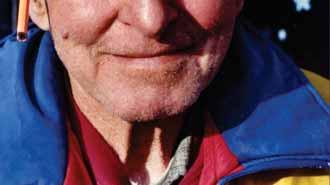


of frequent predation by eagles.
The popularity of this pastime clearly proves it’s not just “for the birds,” a phrase which originated in WW11, when soldiers noticed birds picking through piles of horse manure for seeds.
Birdwatching can be enjoyed as a solo pursuit or with like-minded enthusiasts.
For those new to this pastime or people looking for more places to explore, the Backyard Wildbird and Nature Store hosts twice-weekly birdwatching outings throughout the year. These are fun and educational.
Check out their website for locations and recent sightings at thebackyard.ca.
 Left to right:
Stellar Jay, Crossbill, Red Tail Hawk. Photos: Bob Burgess.
Left to right:
Stellar Jay, Crossbill, Red Tail Hawk. Photos: Bob Burgess.

The 5 R's
BY NADINE WONG
Let’s delve into RECYCLE, REUSE, REPAIR, REINVENT and RESCUE.
A University of Waterloo study reveals Canadians discard approximately a billion pounds — nearly 500 kilograms — of fabric-based fashion and home items annually. Researchers from the University of Waterloo and Seneca College pioneered a method to assess textile quality for potential resale, recycling or disposal. Over half of Canada’s textile waste could be reused, while nearly a quarter could be recycled, highlighting the recent state of textile recycling in the country.
Textile waste grows due to the rise of “fast fashion,” with Vancouver’s Think Thrice Campaign urging reduced consumption, repairs and donations. Key industry concerns include water usage, chemicals, short garment lifecycles, end of life waste and agriculture. Changing consumer habits and business practices, such as embracing second-hand clothing and repair initiatives, are vital for reducing textile waste and promoting sustainability.
What sustainable practices do you implement daily to lessen environmental impact?
Fabric's versatility offers endless opportunities. “The most sustainable piece of clothing is one that is already in your closet,” says Michelle Kresnyak, general manager of the Gabriola Island Recycling Organization (GIRO), on its website (www. girodepot.com/2021/09/14/rethink-your-wardrobe/).
At Ladysmith Healthcare Auxiliary Thrift Store, Manager Tara Mchugh-Lee ensures that nothing leaves the store for free, allowing them to support community health initiatives. Donated items that are not sold in-store are sent to those in need through organizations like the Diabetes Association, homeless shelters and the SPCA. Recording Secretary Pam Fraser highlights their efforts to reduce waste, leading to a signi ficant waste reduction over the past five years.
Joy Baxter, a resident who frequents the thrift store on a neardaily basis, is both a local entrepreneur and artist. Joy commented, "I'm transforming thrift store discoveries and fabrics into retro-inspired artworks, crafting fresh pieces for others to appreciate. And I'm revitalizing discarded items, breathing new life into them." Explore her Facebook page, Joy of Vintage, for more.
The Chemainus Hospital Auxiliary Thrift Store website states, “For our customers, buying ‘gently used’ clothing and

Above:
household items is not only cost-effective, but it also diverts many products from going into the land fills.”
Helen McInnes and Sarah Schmidt lead Mending Mavens, with a Facebook following (www.facebook.com/groups/mendingmavens). “Weekly, we hold mending and sewing gatherings, collaborating monthly with the VIRL Harbourfront Library for workshops on upcycling fabric scraps and hand sewing,” says Helen. “Our ‘Mending and More’ sessions offer a safe space to learn various skills, aiming to extend textile lifespan and reduce land fill waste. We plan to expand with community workshops and ultimately establish a central hub for textile redistribution and ongoing education.”
Currently meeting on Thursdays at Makerspace Nanaimo, their mission is supported by their commitment to sustainability. Join them in mending the world, one stitch at a time. “Bring your sewing project and become part of our community!”
 Fern Walker and Dianne Daniel, volunteers at Chemainus Thrift Store in Old Town. Photo: Susan Attiana
Left:
Donation centre at Ldysmith Healthcare Auxiliary Thrift Store.
Ladysmith Secondary School Student Noah Atkinson, Recording Secretary Pam Fraser, Volunteers Drew Chisholm and Laura Crosby. Photos: Nadine Wong
Fern Walker and Dianne Daniel, volunteers at Chemainus Thrift Store in Old Town. Photo: Susan Attiana
Left:
Donation centre at Ldysmith Healthcare Auxiliary Thrift Store.
Ladysmith Secondary School Student Noah Atkinson, Recording Secretary Pam Fraser, Volunteers Drew Chisholm and Laura Crosby. Photos: Nadine Wong
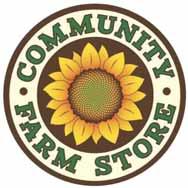


















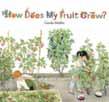








TAKE5 take5.ca 21
Drowning in Plastic
BY GUY DAUNCEY

Since the 1970s, our global use of plastics has increased elevenfold. In 2023, we produced 450 million tonnes of the stu ff, of which 350 million tonnes became waste. Less than nine per cent was recycled for a second life — and most can only be recycled once. Then it’s off to the land fill, the incinerator or the ocean.
In Canada, we use 57 million plastic straws every day, 15 billion plastic bags every year, and 39 per cent of the plastic pollution comes from five companies: Nestle, Tim Hortons, Starbucks, McDonalds and Coca-Cola.
In our home, we have a kitchen bin for cans, paper, cardboard and hard plastics and another for soft plastics, which we squeeze into larger plastic


Enough, for all, forever, Four words that heal our Earth. The simple truth of future life, The hope that leads to birth. Enough, for all, together, For humans, sharks and trees, That all of us can live as one, And sleep at night in peace.
bags and take to the Peerless Road Recycling Centre. We are appalled by the amount of soft plastic we generate for just two people.
Some countries in Asia — the Phillipines is the worst — have not set up recycling programs, and they turn a blind eye when people dump their wastes into local rivers, killing the fish and filling the ocean with plastic. Awhole generation is growing up distressed by the sight of seals strangled by six-pack plastics and albatross chicks dying with their stomachs full of plastic. If you doubt this, watch the documentary Drowning in Plastic on YouTube.
In the Great Pacific Garbage Patch, 52 per cent of the trash comes from land-based sources; the rest from fishing boats whose crews can’t be bothered to collect their wastes.
A 2021 study in the Paci fic Ocean found microplastics in every water sample collected over thousands of square kilometres. Every fish, squid and shrimp studied had microplastics in it. That tasty seafood contains more than you think.
Ten products make up three-quarters of the plastic waste, including


single-use bags, plastic bottles, food containers, food wrappers, plastic lids and fishing gear. In 2022, Canada introduced a welcome ban on single-use plastic bags, cutlery, stir sticks, six-pack rings, straws and some take-out containers. Country Grocer responded by offering stronger plastic bags that can be used more than once. Is that really a solution? So many things come in tight plastic wrap or plastic clamshells. The plastic is everywhere!
And don’t get me started on bottled water. It takes five times more water to make the bottle than the volume it contains, and in 2023, university researchers found some 240,000 detectable plastic fragments in a typical litre of bottled water. About ten per cent were microplastics, 90 per cent were nanoplastics. Microplastics have been found in people’s lungs, excrement, blood and placentas. In case this alarms you, yes, there’s evidence that if your blood





 Photos: Andrew Gardiner
Photos: Andrew Gardiner
vessels are contaminated with microscopic particles of PVC plastic, you will be nearly five times more likely to su ffer a stroke, heart attack or early death than if they were free of contamination.
In 2023, the world’s nations agreed to develop a legally binding treaty to halt all plastic pollution, covering its entire life cycle, following pressure from the World Wildlife Fund and two million people who signed a petition demanding it. A requirement that plastics must be recyclable is not enough, however. If annual production increases faster than the increase in recycling, the problem will only get worse.
Then there’s clothing. Clothes made from polyester, nylon and Lycra release plastic microfibres into the air when we wear them and into our sewers and the ocean when we wash them. If you have a septic field, they’ll enter the groundwater beneath your home. In the ocean, they are swallowed by zooplankton and tiny shrimp-like creatures, which are eaten by herring, juvenile salmon and rock fish. The microfibres have no nutritional value, so the zooplankton slowly become malnourished. Their pooped-out microfibres accumulate on the ocean bottom, where they are likely eaten by crabs and sea stars.
Washing a single load of synthetic clothes releases millions of these microfibres. If you wash your clothes less often, use a front-loading washing machine, install a lint trap and wash on the gentle cold setting, you will supposedly reduce microfibre shedding by 70 per cent. We need to reject fast fashion, buy clothes that are made to last, buy used clothing at the thrift store and avoid those much-loved fleeces.
And there’s more. Around the coast of Vancouver Island, the problem is the blocks of expanded polystyrene that people use to build docks and floats. The ocean is often stormy, and when a block breaks away, it gets smashed on the rocks. Each expanded styrene cell is the size of a fish egg, which to other fish is lunch. A cubic metre block breaks down into 8.3 billion cells. When volunteers from the Rugged Coast Research
Society used paddle boards to gather plastic wastes near the Brooks Peninsula, they gathered 125 cubic metres of the stu ff. Left in the ocean, it would have broken down into a thousand billion cells. We need to ban the use of expanded polystyrene blocks and replace them with air-filled flotation systems.
We’ve got to stop consuming so much, for it is doing so much harm
to nature. We need to know when is enough and start giving things away, instead of always buying more.
The next time you are in Duncan, visit PlentiFILL at 163 Kenneth Street. Its owners, Stephanie Farrow and Crystal Aikman, want to drastically reduce consumer waste in the Cowichan Valley.
We need to be the change we want to see.






TAKE5 take5.ca 23


Master Gardeners
BY MARINA SACHT
Spring has sprung, the birds are singing and suddenly those feelings come over us – the irresistible urge to dig in the garden. But before you head out there we have some advice from Mike O’Neal, president of the Vancouver Island Master Gardeners Association (VIMGA), an affiliated chapter of the Master Gardeners Association of British Columbia.
Formed in 2000, with 55-plus members, VIMGA is the home for Master Gardeners living on Vancouver Island from Mill Bay north to Campbell River. It provides education on a volunteer basis to the public using current, sciencebased horticultural knowledge and integrated pest management practices to ensure the advice they offer exempli fies environmentally responsible practices and stewardship.
Members participate in many different activities with the aim of providing gardening information and advice to the general public. Activities include advice clinics at nurseries, garden centres, plant sales, farmers’ markets, garden shows and garden tours, speaking engagements, online presentations. They also provide email advice, working with Milner Gardens and Woodlots.
While gardening is an ancient craft, trade and pastime, the knowledge and science of gardening continues to evolve, so their members continue their education to provide the public with the latest, accurate, science-based advice.
All Master Gardeners who are members of MGABC have completed a MG Basic Training program. This program is based on a comprehensive set of material covering botany, plant identification, herbaceous and woody plants, right plant / right place, propagation, soils, basic entomology, Integrated Pest Management (IPM), plant diseases, vegetables, roses, vines, fruit and berry culture, and other locally oriented gardening information.
Now with the introduction done, let’s get back to the garden advice!
WAIT! l wait as long as I can to cut off that old growth. It looks ugly, but
it's nutritional for the bulbs underneath the ground. It's a good place for critters to live. And it's good compost for the ground too. We don't need gardens to look pretty in the winter. We need them to be protected from weather, compression and that sort of thing. We encourage people to let nature take its course.
May long weekend is the weekend to plant. Tomatoes can wait until June 1. It's exciting to get, started, but be patient, and wait for the weather.
RIGHT PLANT, RIGHT PLACE
We're very focussed on invasive species. We don't want to see holly trees or pampas grass. We don't want things that don't belong in British Columbia, growing here because those things are hard to maintain, and they edge out the native species. So we're all about native species.
And although, we'll answer your question about how to best grow a meyers lemon tree, we'll also tell you, maybe you could grow an apple tree and buy your lemons,” he laughs.
All ABOUT THE SOIL.
I can’t stress enough the importance of soil and compost. Ideally soil should be composed of 25% water, 25% Air, 45% Mineral, 5% Organic Matter. And try not to disturb the soil at all. The days of the big rototillers are gone. We don't do that anymore. Every time you compress or disturb your soil, it has to start all over again. Don't walk on wet soil.



Mike says that while we live in a great environment in terms of what we have and what we can do and grow there are genuine concerns for some communities’s water supply.
And then there is the issue of how to do we safeguard soil.
“We don't want to see ground up kitchen cabinets in our soil. We don't want to see plastics. We want people to pay attention to the next generation.
If you put that low quality ground up soil in your garden, you may not pay a price in your lifetime, because you may be gone, but your kids will end up having a polluted piece of property.
“Most of us say we would never do illegal dumping, but when you think of poor quality, filler soil with ground up plastics, metal and other contaminants in it, that's probably a much larger problem than we have with illegal dumping. It's just not obvious as the contaminants are buried.”
Watch for a Master Gardener at local events this spring or give them a call.






















TAKE5 take5.ca 27
Wastelands or Wetlands? Water’s Right to Be
BY PAMELA WALKER
In our increasingly hectic world, things must slow down. The Slow Food movement tried to make us eat local food and to embrace traditional methods of cooking. And now the Slow Water movement is gaining popularity.
Why do we have to slow down water? Because there is too much water in the winter and too little in the summer, because of empty wells and empty aquafers, the floods, wetlands and riparian zones, and because of climate

change and worries about the sea level rising.
The Slow Water movement counteracts our present desire to get rid of water as fast as possible. We put “excess” water in storm drains, pipes, culverts and ditches; we pave over streams; we drain wetlands and ignore riparian zones; we build over creeks and streams; sometimes we just fill in watercourses with debris from construction and hope it disappears. Then, at the source of our water, we’ve clearcut forests and now



trees cannot hold back the precious component of all living matter, causing sloughs and runoff. And without the trees’ canopy, the snow pack melts too quickly.
The result is our aquafers — whatever they are made of or however deep they are — aren’t replenished as they once were. None of this, we are learning, is good.
We are also learning that when we try and control water, we are actually harming the supply of it. Wetlands are not wastelands. Water won’t disappear; it will come back and flood what we have tried to dry up.
In her book Water Always Wins, environmental journalist Erica Gies, who lives part-time in Victoria, argues that we must/can collaborate with water rather than control it. We can work with local landscapes, climates and cultures, instead of working against them. The Slow Water movement argues for a “fundamental shift in how we think about ourselves, our systems and our world” in order “to understand water and accept it for what it is instead of trying to shape it into what we might wish
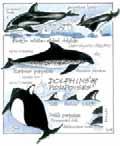




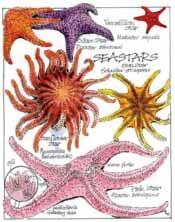

28 take5.ca APRIL2024
Diagram courtesy of NALT
it to be.”
Not understanding or respecting water is something the New Zealand government has made illegal. In 2017, New Zealand was the fi rst country in the world to give rivers legal rights — just as people have (and corporations have in the US). Some of the rights awarded to rivers are the right to exist, the right to continue to flow and the right to have relationships with rocks.
Addressing the lack of respect for rivers, artists are painting “ghost rivers” onto sidewalks and roads and parking lots to remind people where they used to run.
Ladysmith’s Poet Laureate John Edwards wants to know about one such ghost creek in our area. A tributary of the Nanaimo River, Thomas Creek flows somewhere under the highway, underneath the nefarious Schnitzer Steel, and out through the hay fields into Ladysmith Harbour. But nobody seems to remember exactly where, and that seems very sad.
We can learn to put into place Slow Water principles by making our local governments aware we care about wa-
ter. We can use less. (Did you know BC residents use more, on average, than residents in any other province?) We can try and slow the water down on our own property so it has time to seep back into the ground and fill our wells. “How?” you ask. Here’s a few ideas:
• Consider paving stones or gravel instead of concrete. Bare, packed soil is not good either.
• Plant trees and bushes on your property. Yes, the trees will drink some, but in time, the roots will hold more water back than they use.
• Put big branches in ditches so as to give water time to seep into the banks.
• Dam up or divert drains so water has time to run into the soil.
• Don’t try and pump water away from your property and think about leaving the beavers alone to do what they know needs to be done.
• Help organizations rehabilitate wetlands and foreshores. Wetlands have the ability to grow upwards, given enough silt, and to stop sea rise.
• Learn more. RDN’s Water to Earth activities on now until April 22 is a great place to start.







TAKE5 take5.ca 29

New show opens at LLT
Ladysmith Little Theatre is pleased to present its fi nal show of the season.
Visiting Mr. Green written by Jeff Baron and directed by Mort Paul is showing April 18 to May 5, 2024.
Eighty-six-year-old widower Mr. Green is almost hit by a car driven by young corporate executive Ross Gardiner. Found guilty of reckless driving, Ross is ordered to spend the next six months making weekly visits to Mr. Green. What starts off as a comedy about two people who resent being in the same room together develops into drama, as family secrets are revealed and old wounds are opened.
The Los Angeles Times wrote Visiting

Mr. Green tells its story with such quiet conviction that theatregoers fi nd tears trickling down their cheeks before they

realize what’s hit them. It’s a beautiful exercise in learning to live with – and care for – one another.







30 take5.ca APRIL2024
Vic Duffhues as Mr Green and James Kwas as Ross Gardiner rehearing "Visiting Mr. Green" at Ladysmith Little Theatre. Photo: Susan Carthy








Tickets are $25 for non-members; get them online at ladysmiththeatre.com and get them before they sell out.
Ladysmith Theatre is celebrating its 20th season of providing high-quality community theatre experiences. Headsets are now available to enhance the theatre experience for the hearing impaired. Volunteers are welcome!
Yellow Point Drama Group
Yellow Point Drama Group presents Jonas and Barry in the Home. Directed by Moira Fox, this is a delightfully funny and relatable story by acclaimed playwright Norm Foster.
Barry is annoyed that he’s already living in a seniors’ home at 67. Rosie, his daughter who works at the home, brought him in so he wouldn’t be alone in case he had a heart attack, like his father, brother, and uncle did before they were 65. So, Barry spends his time shu ffling around in his slippers, taking naps and having dinner with Rosie, and that’s good enough for him. But Barry doesn’t get to revel in the quiet for long. Enter the loquacious and flirtatious Jonas. Jonas likes to indulge in the fi ner things in life, like decadent dates and nice clothes, and he sees Barry the curmudgeon as a fi xer-upper. As they bicker and bond over women, sports and family values, Jonas and Barry must learn to open up and face how to keep living their lives.
Cast includes Christian Ostaffy (Barry Butter field), Gord McInnis (Jonas Ainsworth) and Aisling Kennedy (Rosie).
The show plays April 12 to 28, 2024, and tickets may be purchased online at yellowpointdramagroup.org or at the door. Adults are $25; students are $15.
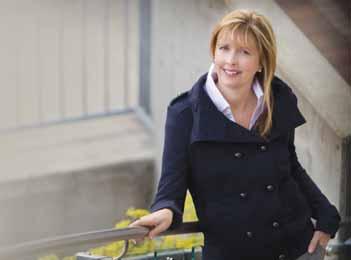
TAKE5 take5.ca 31
Yellow Point Drama Group's production of Jonas and Barry in the Home stars Aisling Kennedy as Rosie, Christian Ostaffy as Barry (left) Gord McInnis as Jonas (right). Photo: Kim Rogers.
Arts shows
Two great shows are happening in our communities.
The art show “Feathers and Fur” will be the featured show from April 3 to 17, 2024, at the Ladysmith Art Gallery.
During a recent Arts Council of Ladysmith and District briefi ng, President Andrea Rosato-Taylor mentioned that the Town of Ladysmith has proposed providing the ACL with their previous location within the Comox Logging & Rail Co building, referred to as the Machine Shop. However, she noted that substantial fundraising efforts will be required by the society. Speci fic details remain to be discussed with the ToL.
Four artists will display their works in Silk, Wool, and Silver at the Rainforest Arts Gallery in April and May. See Lor-
raine Taylor – Silk Painting, Gail Grekul – Silk Painting, Donna L Bennett – Fibre Art, and Jane Barry – Silver Jewellery doing demos through out April and May. Details at cvcas.ca/events.
Swing into Spring
Yellow Point Singers invite the public to celebrate the season with Sing, Spring and Swing. This season’s choral concert will be held on Sunday, May 5, at 2 p.m. at Cedar Community Hall, 2388 Cedar Road, Nanaimo, BC.
The choir will be joined by House Blend, a male a capella quartet, and special guest musicians. The program ranges from big band swing to numbers from Hollywood and Broadway. Tickets just $20 per adult and $5 for children under 12.

32 take5.ca APRIL2024

Over the next few months, the Town of Ladysmith will be looking for your approval to borrow $13.5 million dollars to build a new City Hall with some institutional space as part of the proposed Buller Street Project.
Council needs your approval to borrow this money. There are two ways they can get your approval: via referendum, where you would be asked if you are supportive of the borrowing, or via the Alternative Approval Process (AAP).
The AAP is a form of approval that allows taxpayers to express their disapproval of borrowing this money. The AAP assumes that taxpayers support the proposal, but it requires you to sign a form stating your opposition if you do not. In effect, the AAP is voting against the borrowing proposal.
According the booklet Alternative Approval Process: A Guide for Local Governments in British Columbia, published by the BC government, if ten per cent or more of the voters oppose the proposal, the local government should either proceed to elector assent (referendum) or put the matter on hold.
My circle of friends questions the value of the project, its location, and its costs. Others, like myself, have expressed their dislike of the AAP process as being undemocratic. We see the AAP as a form of negative billing (in other words, you pay if you don’t say).


All this opposition leads me to believe there is a good chance that more than ten per cent or more of the Town’s taxpayers will sign the form opposing an AAP. If it fails, the Town will likely proceed to a referendum if they still want the project to go ahead.
One reason the Town is going with an AAP instead of a referendum is the cost. At the January 9 council meeting, it was estimated that a referendum would cost about $35,000, whereas the AAP would be about $10,000. This cost savings is valid only if the AAP passes; if it fails, then the $10,000 spent would be for naught, and the town would still have to dish out the $35,000.
Soon, we should be learning many of the details for the proposed new City Hall and the rest of the Buller Street Project. Hopefully, we will fi nd out how much a new City Hall will cost each homeowner for the next 30 years. These details are needed so the taxpayers can make an informed decision if they want to support the borrowing of this money for a new City Hall at the Buller Street location.
Once you have this additional information, and if you are opposed to the planned AAP, I suggest that you email City Hall and let them know of your intention to say no to borrowing $13.5 million dollars, plus $9 million in interest over the next 30 years. This can help Council get a feel in advance if the AAP will likely fail or pass. If they believe it is likely to fail, they can bypass the AAP and go directly to a referendum.
At least, that’s as I see it.
PS: To get a good understanding of the planned AAP and the proposed timetable, check out the YouTube video of the January 9 council meeting, starting at the five-minute mark.









TAKE5 take5.ca 33



RDN Area A Cedar, South Wellington, Cassidy & Yellow Point
For this year’s green issue, let’s talk about green spaces in our community — our parks. Public green spaces have health superpowers in addition to offering community and economic benefits.
A growing body of research reveals the multifaceted and powerful benefits of spending time in green spaces. These include improved immune, heart and respiratory functioning; increased overall physical activity; reduced risk for obesity and diabetes; reduction of stress and mental health issues; and improved thinking and concentration.
In rural communities like ours, we are lucky to be surrounded by green. Public green spaces have the added benefit of offering an intentional space to connect with fellow community members and build relationships that are the backbone of a strong community. Whether it is structured group activities and informal encounters, these social connections can reduce loneliness and improve well-being. To bring it back to physical health, loneliness is associated with poorer physical health. Greater community connections are particularly important during times of emergency, like ex-

treme weather events or fi re. The more we know each other, the more we look out for one another. Parks provide us the space to build these connections.
During the election, I spoke about the importance of community well-being and park spaces. Last month, I was excited to announce the creation of Cassidy’s fi rst community park, noting that many community members complained of the complete lack of public amenities in Cassidy (design to be determined following community engagement). I also look forward to the opening of the community centre in South Wellington and the creation of a playground in Cedar. It is because of the many benefits of public spaces that I support community groups like Cedar Community Hall Association and the South Wellington and Area Community Association.
Community volunteers enhance public spaces and, in doing so, provide incredible service to our communities. The investment of public dollars into community spaces that promote health, well-being and community connection is money well spent. In the 2024 budget, community parks funding for Area A increased by 29 per cent — which sounds like a lot. However, compared to the other electoral areas in the RDN, Area A has the second lowest level of




funding for community parks despite being the third largest in population in the 2024 budget.
As part of this discussion on the importance of public green space, I want to ensure the community is aware of the proposed developments in the Cable Bay Trail area. Because the proposed developments are within the City of Nanaimo boundaries, the RDN board does not have a vote on these decisions. The City of Nanaimo is considering development proposals on either side of the Cable Bay Trail that extend along most of the trail. The proposals include rezoning to industrial the property to the west of the trail and subdividing the rural residential property to the east of the trail. If these proposals are approved, the trail itself will remain but the natural envi-




34 take5.ca APRIL2024
Site of Cassidy Park. Photo: Nick Longo





TAKE5 take5.ca 35


ronment surrounding the trail will be impacted. The proposed access roads for the rural residential development are along Nicola and Ivor roads. All this information is publicly available on the City of Nanaimo website but may be more easily found on the Save Cable Bay Area Facebook page.
Given that this is a much loved and used trail, I wanted the community to be aware and understand the process. These land use decisions are made by the City of Nanaimo staff and Council — although only City of Nanaimo sta ff make the subdivision decision for the property to the east of the trail, as it does not come before Council. The Ministry of Transportation and Infrastructure (MoTI) make the decisions regarding roads in Area A. Although I will continue to advocate for the interests of potentially impacted Area A residents, particularly those in Cedar by the Sea, community members may wish to share their opinions with the bodies responsible for these decisions.
Your thoughts and comments are always welcome. Email jessica.stanley@rdn.bc.ca or phone 250-268-7359.

CVRD Area H North Oyster/Diamond Budget 2024
The fi nal decision on the budget was made by the Board on March 13, 2024. There was a large turnout at the meeting, with all speakers very concerned about the increase. There was a lot of passion and sharing of how di fficult times were for themselves or people they know. It is not an easy task to stand up in front of many people, and I applaud those that made the effort.
The budget is not a simple exercise, and the process for next year’s budget will start in the next few months — one ends, the next one begins. It is hours and hours of reading, reviewing, discussions and debates. Each step, each meeting and each document is on the CVRD website.
In the end, decisions need to be voted on. The vote on budget items is weighted based on population. The maximum potential weighting per director is five points, and there are 16 directors. Here is a list of the weightings by region/municipality (Total 50 pts):

This year, the fi nal overall result is an increase of about 16 per cent, which breaks down as follows: core and supplementals recreation supplementals of 9.15 per cent; regional recreation, 6.17 per cent (due to a 2022 referendum); and Vancouver Island Library, 0.77 per cent.
Volunteers Recognition Time
I would like to express my gratitude, and the gratitude of our community, by recognizing all volunteers that step up and serve Area H each and every year. It is a long list, and I know I’m sure to miss somebody or some group. Please let me know so I can include you next time.
36 take5.ca APRIL2024
I hope you will take a minute to read their names, and if you recognize a name, reach out and say thanks. All groups are looking for membership — let me know if you are interested and I’ll connect you.
Alternate director: Barry Marcotte
North Oyster Volunteer Fire Department (18):Justin Dault (lieutenant), Sandy David, Trevor Fritzel, Tony Marcotte (deputy chief), Jared Marshall, Bruce McKenzie (captain), Brian Mowbray, Nigel Ramer, Florian Schulz (fi re chief), Andrew Scruton, Colby Sedola, Isabel Smith, Benjamin Soer (lieutenant), Fiona Steeves (lieutenant), Ron Strazza, Stephen Wisely (captain). Advisory Planning Commission (6): Mike Fall (chair), Chris Gerrand (vice chair), Alison Heikes, John Edwards, Doug Hoare, Ione Brown.
Parks Advisory Commission (6): Ross Shepherd (chair), Royan Viggers (secretary), Brian Brown, Valerie Bresnahan, Joanne Spilsbury, Roger Giffen Area H representative to Ladysmith Parks, Recreation and Culture Advisory Committee: Pamela Walker
Yellow Point Trail Steering Committee: Yellow Point Ecological Society, Nikki Toxopeus and Pamela Walker, RDN Area A director, Jessica Stanley, CVRD Area H director, Ben Maartman
The many groups that serve to make our community the best it can be: Diamond Improvement District, NanaimoCedar Farmers Institute, North Oyster and Area Historical Society, North Oyster Rate Payers Association, North Oyster Parents Advisory Committee, Vancouver Island Water Watch Coalition, Yellow Point Ecological Society.
In closing: A special congratulations to Irene Hawthornethwaite for her recent award from the Ladysmith & District Historical Society for her long-term commitment to preserving heritage and nurturing community.
And to quote Irene, “It is such a wonderful community to work with. It’s just wonderful!”
When you see one of the people listed above or who are part of a local group, take a moment to thank them for their service. Together, it’s everyone that makes the Diamond and North Oyster the best place to live.
In service, ben.maartman@cvrd. bc.ca; 250-510-5930



TAKE5 take5.ca 37

Pollen season is here!
BY ELLY SMITH
Welcome, April! It’s so nice to see the sunshine, the flowers blooming and the buds on the trees — but it’s sniff, sneeze, cough, allergy season too!
Allergy season is typically March through June for tree pollen. June, July and August are when the grass pollens are high, and this continues into September if the weather is warm. August through to the end of October is weed-pollen season, and it doesn’t really end until the weeds freeze. In the winter, we spend about 90 per cent of our time indoors, where the air can be as much as 100 times more polluted than outdoor air. April is a great time to have a “spring clean” of your home and your body!
Allergies occur when the immune system overreacts to typically harmless substances, triggering a range of symptoms that can include sneezing, itching and congestion. Common allergens include pollen, dust mites, pet dander and certain foods. The immune system mistakenly sees the pollen as a danger and releases antibodies that attack the allergens. This leads to the release of chemicals called histamines into the blood. Histamines trigger a runny nose, itchy eyes, and other symptoms that are all too familiar if you have allergies.
Detox your home and your lungs. It is estimated that half of all homes struggle with dampness and mold, making symp-








Allergy sufferers thankfully can also reach out for some traditional and natural remedies.
Pictured here is
Champagne Hills Botanicals Sinus Relief Tea.
Photo submitted.
toms like developing mold toxicity or fungal infection that target the lungs much more likely. Dust mites found in bedding can also trigger allergies and asthma.
The World Health Organization considers seasonal allergies, including asthma and sinusitis, as respiratory diseases that can be effectively helped by acupuncture.
Here are a few tips to help during allergy season:
• Breathing exercises to improve lung functioning and capacity are key. Regular exercising and yoga help to strengthen the supporting muscles in your chest area that help with overall lung functioning.
• Foods high in antioxidants include blueberries being one of the highest, followed by dark chocolate (thank you!), pecans, strawberries, artichokes, goji berries, raspberries, kale, red cabbage, beans, beets and spinach.
• Green tea contains natural antihistamines that can assist in your fight against allergies.
• Use the ‘Allergy Outlook Tracker’ from the Weather Network.










• Detox your indoor air (open the windows, vacuum carpets frequently and dust with a microfiber cloth). Keep fresh air moving with a HEPA filter to eliminate airborne particles, allergens, and pollutants.
• Switch to natural household cleaners; simple water and vinegar cleans and keeps fungal growth con fi ned.
• Put dust-mite-proof covers on pillows, comforters, mattresses, and box springs.
• Have allergy friendly plants. Some plants can help clean the air in your home, clearing out annoying chemical residues and other irritants.
Treatment options to consider:
• Nasal irrigation (rinsing your nasal passages with saline solution) is a quick, inexpensive, and effective way to relieve nasal congestion and allergens from your nose.
• Get tested by an Allergist to identify what triggers your allergies; then a treatment plan can be implemented.
• Immunotherapy, such as allergy shots and sublingual immunotherapy (SLIT), can be effective. Allergy shots can work well with allergies to pollen, pets, dust, bees or other stinging insects as well as asthma. Allergy shots do not usually work well for allergies to food, medicines, feathers, or for hives or eczema. SLIT tablets are taken under the tongue and provide small doses of an allergen for dust mites, grass, and ragweed.
• Hypnotherapy can help those who develop allergy symptoms at the mere thought of their allergens.
• Acupuncture assists the immune system, reducing the symptoms associated with allergies and improves other deficiencies or imbalances that affect how our bodies fight off foreign substances or allergens.
• Discuss herbal tinctures with your Naturopath or Herbalist to see what’s best for you.
• Talk with your Pharmacist about oral antihistamines, corticosteroid nasal sprays, cromolyn sodium nasal spray and oral decongestants.
Can Bliss Hypnosis help with your allergies?
Hypnotherapy can help by reframing the body’s response to the allergen. By treating the allergy as if it is an “inappropriate response to a benign stimulus” we can rewire the neurological response to accept the past allergen as safe. Book a free 20-minute discovery call to discuss how hypnotherapy can support your wellness journey. In-home and online sessions available.
Shabnam Rana, Owner, and Pharmacist at Ladysmith
Wholehealth Pharmacy can prescribe for allergies, including both topical and oral medications. Immunotherapy may help desensitization to some allergens. If nothing is working, Shabnam suggests asking your doctor if Montelukast would be a desirable choice. If you do not have a family doctor Ladysmith Wholehealth Pharmacy has partnered with Lyte Medical Telemedicine, providing patients without a family doctor access to the medical care they need.
Be aware that using nasal decongestants for more than three to five days can cause rebound congestion. Also, avoid oral decongestants if you have heart issues or high blood pressure.
Once you fi nd the ideal form of treatment for controlling your allergies, then your allergies won’t control you . Happy spring!





TAKE5 take5.ca 39


The French Paradox
It was early evening in late June 1992. Sun filtered through the acacia leaves, breezes wafted floral aromas while softballs pinged off metal bats in the ball field across the street, and unmuffled Harleys punctuated the summer air with mechanical flatulence.
I was standing behind my reception table on the restaurant’s front lawn preparing for 20 doctors to arrive for what is known in the trade as a “drug dinner.” That’s where a deep-pocketed pharmaceutical salesman takes a pack of doctors out to let their hair down while subjecting them to a short sales pitch.
Little did I suspect I was moments
away from experiencing the biggest shift in the wine business since the invention of the corkscrew. As was my usual practice, I had three different whites and a token bottle of red open. The doctors arrived, the hors d’oeuvres circulated, and then, right out of the blue - make that out of the red - something strange happened. Whereas previously 80% of the docs would drink white before dinner, on this particular day, despite my best efforts, no one wanted white. The three open bottles of white remained untouched. Not one ounce of white was served. What the blazes was going on?
As it turns out, the doctors’ dramatic shift over to red was the result of the French paradox arriving on our shores. For those of you vacationing in your time capsules through the nineties, the French paradox was based on a study released by research scientist Serge Renaud, who observed that French people consumed lots of fat, exercised little, smoked, were obnoxious to tourists, yet lived longer than Americans and suffered far fewer heart ailments. Renaud’s explanation for this phenomenon? The French drank plenty of red wine. Not having Harleys

to listen to might also have helped.
Renaud’s study hit the North American wine market like the Allies bombing of Dresden in February 1945. Almost overnight our white wine sales went from 75% of our business down to 40%, leaving many a fine bottle of white collecting mould in our cooler. In 1992, American red wine sales, which had been on the decline, increased 40%.
I mention this because, just recently, Renaud passed away, probably murdered by a white wine producer who went bankrupt following his study. People took things too far. The twenty doctors, for example. Renaud said red was good; he didn’t say white was poison. Your heart won’t stop beating should you - heaven forbid - have a glass of Gewurztraminer before switching over to red.
The Renaud study reported that red wine was good for me. What wasn’t reported was what he also said: “If you eat French fries and steak every day with two glasses of wine, you won’t go very far.” And just in case any of you twenty doctors are reading, nowhere did he say that white wine should be avoided as





40 take5.ca APRIL2024
harmful.
I’ll admit to being skeptical of Renaud’s work. That red wine is actually good for you seems too good to be true. What’s next? That three servings of ice cream a day will guarantee a slender figure?
There have been suggestions that Renaud started with his conclusion and worked backwards to justify it. He admits to being inspired by his upbringing in Bordeaux where he was influenced by his parents and their friends who lived into their 80s and 90s, a fact he attributed to wine. He was quoted as saying, “You know instinctively that wine is good for you.”
Right. The next time you park your car in the neighbour’s swimming pool, try using that argument on the two burly policemen who, just last week, used a boat hook to fish you out of that same pool. Or to your wife, at the family reunion, when you and cousin Brian, instinctively knowing that wine is good for you - and if a little is good, a whole lot is even betterdecided that the only way to determine who was in better shape was to take off all your clothes to prevent overheating and have a foot race around the block.
This leads us to consider the definition of a drinking problem. The answer to this question was provided by my doctor friend who, at the time of this true story was chief medical officer of the Drug and Alcohol Abuse Commission. All highly ironic because, in the free-pouring seventies, he listed drinking as his sport, hobby, favourite pastime, and - most important – means of professional development.
“A drinking problem,” he said one Sunday afternoon over a couple of beer, double gin and tonics, two bottles of Bertani Valpollicella chased by a few Remys, “is when you drink more than your doctor. If this happens, get a second opinion. Better still, come to me.”
Fortunately, thanks to careful observation at maybe 150 drug dinners, I know which doctors to go to. And yes, I still have a glass of white before switching over to red. So far, no ill effects.
Pick up a copy of Delbert's book Slightly Corked at the TAKE 5 office for just $20 and laugh all month.
Wine Pick
BY ADRIANE POLO FROM CAREFREE WINE TOURS
In keeping with the "green" theme of this issue of TAKE 5, how about opening a bottle of Sperling Vinyards Natural Organic Amber Pinot Gris?
It's from an organic winery whose roots go back 100 years. And at $24 online, let's have a toast or two to Earth Day!







TAKE5 take5.ca 41



FOR SALE
FISH FISH FISH. Buy Direct from the guy who caught it! High quality salmon, lingcod, rock fish. All fish blast frozen at sea. Satisfaction Guaranteed! Contact Jim at oceandancer.wallace@gmail.com or 250-245-5957/250-739-1123.
CEDAR GARDEN PRODUCTS. Raised patio herb and garden beds, planters, and trellises. Call Ken at 250-246-4766 or self serve at 10729 Rocky Beach Road, Saltair.
FARM FRESH
KB HANDYMAN AND YARD WORKS. Minor carpentry work, decks, fences, power washing, tree pruning, yard clean up, lawn fertilizing, mowing. Seniors discount. Contact Karl kbhandymanandyardworks@ gmail.com or 250-714-2738.
HEART LAKE ROOFING for all your roofing repairs 250-668-9195.
ALL ACRES providing all aspects of tree work. Pruning, falling, hedging, dangerous tree removal. Fully insured. Professional work at reasonable rates. Call 250-246-1265.
CONCRETE RESULTS. Foundations, retaining walls, patios, driveways, walks and stairs. Full forming and finishing. 40 years’ experience. Email Gord at concreteresults@ live.com.
PAINTER. Certified Journeyman. Clean, ef ficient, respectful, punctual. 25+ years’ experience. WCB coverage. Enhance your enjoyment of the home you love. Call Howard, 250-245-2751.




EMPRESS ACRES LITTLE FARM STORE. Pastured eggs & pork; org. cert. produce; raw honey; open 7 days/wk; see Fresh Sheet at www.empressacres.ca for updates; Katina’s Sunday Goodies, 10am–noon; 2974 Haslam Rd.; for pork orders, ph/text Marlene at 250889-1343, or marlene@empressacres.ca.
ARTS & CRAFT FAIRS
EVERY SUNDAY CAROL’S ARTISANS. Pens, quilting, woodworking, purses, sewing, knitting, jewellery, hats, pottery, clocks, cards, baking, preserves, jams, etc; 13467 Cedar Road; 10am–3pm. New vendors welcome. Contact petespensandmore@ shaw.ca
HEALTH & WELLNESS
TAI CHI for mental & physical health. Beginner class Monday mornings; ongoing class every Wednesday morning. For class time and location and more information, visit www.taichinanaimo. org or call Sara 250-245-1466
HOME & GARDEN
DARRELL ESSAR RENOVATIONS. Over 35 years’ experience, certified journeyman carpenter. Renovations. For free estimate, call Darrell 250-714-3823.
ISLAND PRUNING. Professional tree care from large scale orchards to budding new trees. I can meet any pruning need. Shrubs, vines and ornamental. Large & small clean-ups. Call Darcy Belcourt 250-323-1260.
ROYAL SELF STORAGE Ladysmith, CAR, BOAT & R.V. storage available. 250-245-1171
BUSINESS
I CAN EDIT. Copy editing, proofreading, structural editing & more. Fiction or non fiction, web content and eBook prep. For more information, editican@gmail.com.
LAUNDRY SERVICES
CROFTON SHOP & WASH. Community thrift store & laundromat with large capacity machines; affordable drop-off and pick-services; 1606 Joan Ave., Crofton; open 9am–7pm, 6 days a week; closed Weds. Call 250-324-2249.

take5.ca APRIL2024


















Driving Dilemma
“The machine of a dream, such a clean machine.” — Queen, “I’m in Love With My Car,” 1975
My April topic was con fi rmed yesterday; I was all set to write something Green (to match the month’s theme), but this spoke to me. In actual fact, it screamed to me!
I had just pulled into Shar-Kare to load up on feed. A large shiny red truck was parked beside me, and the fellow was just getting into the cockpit. All of a sudden, the engine grunted a loud “RUNRUN,” and with screeching tires, he backed up onto the road, sped all of 12 metres to the round red thingy that says STOP in big bold letters … for a nanosecond, and then peeled out onto the main drag like, as me dear ol’ mom would say, a bat out of hell. At that moment, I knew that was my sign for this edition of the TAKE 5.
Okay, I try to be nice; really, I do. But everybody deserves a wee rant once in a while. How about once a year. So, here it is then. I’ve been bottling this up for a loooong time; let’s say, off and on for about 45 years. It’s a hit list of all the irritating, stupid, silly, inconsiderate, crazy … you get the idea but allow me one more … ignorant actions that I’ve witnessed, some repeatedly, for what feels like forever. Incredibly the list continues to get longer.
Unlike most teens of my time, I didn’t eagerly await my 16th birthday so I could get behind the wheel of my dad’s car. I waited until I was 24, practised driving across Canada and got my licence in Nanaimo. But I digress. Back to the list. Well, not quite yet. Let’s set the stage.
The mind of some drivers. If you’re about my age, you might remember the Walt Disney 1950 short with Goofy (episode 21 if you want to check it out).

It’s called Motor Mania. I just looked it up again to see if perhaps my aging memory was fading. Nope. So, Goofy is this pleasant mild-mannered guy … until he gets into his car and starts it up. He transforms into one devilishly crazy character. I remember as a kid just laughing hysterically at this cartoon, but sadly methinks truth is stranger than fiction here. They were onto something back then.
Okay let’s get to it. My top 10. Many discretions are based on speed (or lack thereof).
My all-time favourite peeve: doing five cents in the $20 lane. People, that left lane is called a PASSING lane for a reason. It’s not called the MY lane, or “I’m going to turn left in 10 kilometres, so I want to get prepared” lane.
Slow #1: Like even slower than the speed limit. I was always taught the five-car rule: if you’re looking periodically in your rear-view mirror (which you’re supposed to) and you see five cars behind you, when it’s safe pull over, let them pass. You are not the traffic police, the speed monitor. Just let them pass.
Slow #2: Oh, you’re speeding now? It must be a coincidence that I was trying to pass you.
Speed #1: Your lead-foot drivers with their “go faster” car language. This is a popular one. So, I’m going faster than the speed limit, but Goofy behind me doesn’t think it’s fast enough. You know, he has places to go, things to do and why am I in the way? So, he talks to me with his vehicle. He says, “I’m right behind you. I mean, right behind you” … tailgating to hustle me on, then a couple of horn honks, then the high beams. Sure wish I had a hidden set of high beams mounted on my bumper. Now’s the perfect time to turn them on.
Speed #2: In BC, they have these great caution lights that start flashing to let you know that the traffic lights ahead are about to turn red, so slow down. What? In your dreams! Don’t they mean that this is the time to gun it, so you can zoom through those lights as they turn red?
Etiquette #1: Merge manners. When two lanes merge into one, the idea is to take turns, in a nice, orderly, friendly Canadian fashion. This is not a challenge to muscle your way in front of me, especially when your reward is being one whole car-length ahead. Sheesh!
Etiquette #2: I’m the only vehicle on the long straight road. But I must be ever-vigilant because there’s the Goof, entering from a side road, and there’s just no way that they can wait till I pass. They simply must pull out now. Break time for me. Sure hope the roads aren’t slippery.
Etiquette #3: There’s this little stick thing mounted on the steering column. It goes by several names: a blinker, a turn signal lever, a turn signal arm, a turn signal switch. You use it when you want to go left or right so other drivers know what to expect. Mom was notorious for ignoring this device. When reminded, she would say, “They see me slowing down.”
Country Driving 101: Around here, there aren’t just cars, trucks and SUVs that share the road. We have tractors of all shapes and sizes. My advice: relax, enjoy the scenery; remember, you’re in farm country.
New Age probs: Question — do you really think you can text and operate a vehicle at the same time? Well, you can’t. And don’t think you’re clever in your sneakiness. You aren’t. Same deal if you’re a pedestrian. You cannot stay alert to negotiate car traffic with crosswalk lights AND text at the same time. Nope.
Whew. Well, I gotta say I feel a whole lot better already. That rant was quite cathartic. Hey, maybe it can work for you too? There is a letter section in this illustrious publication. Wanna unload?
Jackie Moad continues to farm that 20-acre organic slice of Paradise in Cedar while occasionally and cautiously getting behind the wheel of her Westie, ever looking forward, with local solutions for global challenges in mind.
44 take5.ca APRIL2024
Jackie & her VW (VaVaVoom), happy to be back down on the farm

Common Mistakes in Dog Training
BY KATHY REILLY OF MISS BEHAVIOUR'S DOG TRAINING
Using harsh or aversive methods
These include yelling, hitting, choking, shocking or intimidating your dog. These methods can cause fear, anxiety, aggression and trauma in your dog, and damage your relationship with him. They can also back fi re and make the behaviour worse or create new problems. Instead, use positive reinforcement and gentle guidance to teach your dog what you want him to do. If you feel yourself getting frustrated, STOP and play with your dog or just cuddle.
Not providing enough exercise and mental stimulation
Dogs need physical and mental activity to stay healthy, happy and well-behaved. A bored or restless dog can develop behavioural issues, such as barking, chewing, digging or escaping. Provide your dog with regular walks, playtime, toys, puzzles and training sessions to keep him busy and satisfied.
Not socializing your dog properly
Socialization means exposing your dog to different people, animals, plac-
es, sounds and situations in a positive and safe way. Socialization helps your dog learn to be con fident, friendly and adaptable and prevents fear, aggression and anxiety. The best time to socialize your dog is when he is a puppy, between three and 16 weeks of age, but you can continue to socialize your dog throughout his life.
Not being clear or consistent with your commands and rules
Dogs need clear and consistent communication to learn what you want from them. If you use di fferent words, signals or tones for the same command, or if you change the rules or expectations for your dog, you will confuse and frustrate him. For example, if you sometimes allow your dog to jump on you and sometimes scold him for it, he will not know what you want him to do. Decide on the commands and rules you want to use and stick to them every time.
Expecting too much too soon
Dogs learn at different rates, depending on their age, breed, personality and previous experiences. Don’t expect your dog to master a new skill or behaviour in one session or to perform perfectly in every situation. Be patient, realistic and flexible with your dog and adjust your training accordingly. Praise and reward your dog for every small step he makes and don’t give up on him. He will eventually get it with your help and support.
Remember, you are learning too. Most of us fail to master a new job or technique in one session. If you keep doing some little thing wrong and getting the same result, perhaps you need to consult a professional to help you tweak your technique so you and your dog can achieve success.
Source: Miss Behaviour Dog Training and AKC.




TAKE5 take5.ca 45




















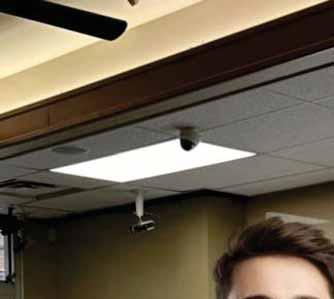






































































































 Colin Bartlett, of the Backyard Wildbird and Nature Store. Photo: Kerith Waddington Left: Swallow. Photo: Bob Burgess
Colin Bartlett, of the Backyard Wildbird and Nature Store. Photo: Kerith Waddington Left: Swallow. Photo: Bob Burgess




















 Left to Right: Osprey, Bald Eagle, Great Heron, Rufus Hummer, Pileated Woodpecker. Photos: Bob Burgess.
Left to Right: Osprey, Bald Eagle, Great Heron, Rufus Hummer, Pileated Woodpecker. Photos: Bob Burgess.







 Left to right:
Stellar Jay, Crossbill, Red Tail Hawk. Photos: Bob Burgess.
Left to right:
Stellar Jay, Crossbill, Red Tail Hawk. Photos: Bob Burgess.


 Fern Walker and Dianne Daniel, volunteers at Chemainus Thrift Store in Old Town. Photo: Susan Attiana
Left:
Donation centre at Ldysmith Healthcare Auxiliary Thrift Store.
Ladysmith Secondary School Student Noah Atkinson, Recording Secretary Pam Fraser, Volunteers Drew Chisholm and Laura Crosby. Photos: Nadine Wong
Fern Walker and Dianne Daniel, volunteers at Chemainus Thrift Store in Old Town. Photo: Susan Attiana
Left:
Donation centre at Ldysmith Healthcare Auxiliary Thrift Store.
Ladysmith Secondary School Student Noah Atkinson, Recording Secretary Pam Fraser, Volunteers Drew Chisholm and Laura Crosby. Photos: Nadine Wong





























 Photos: Andrew Gardiner
Photos: Andrew Gardiner

























































































































































